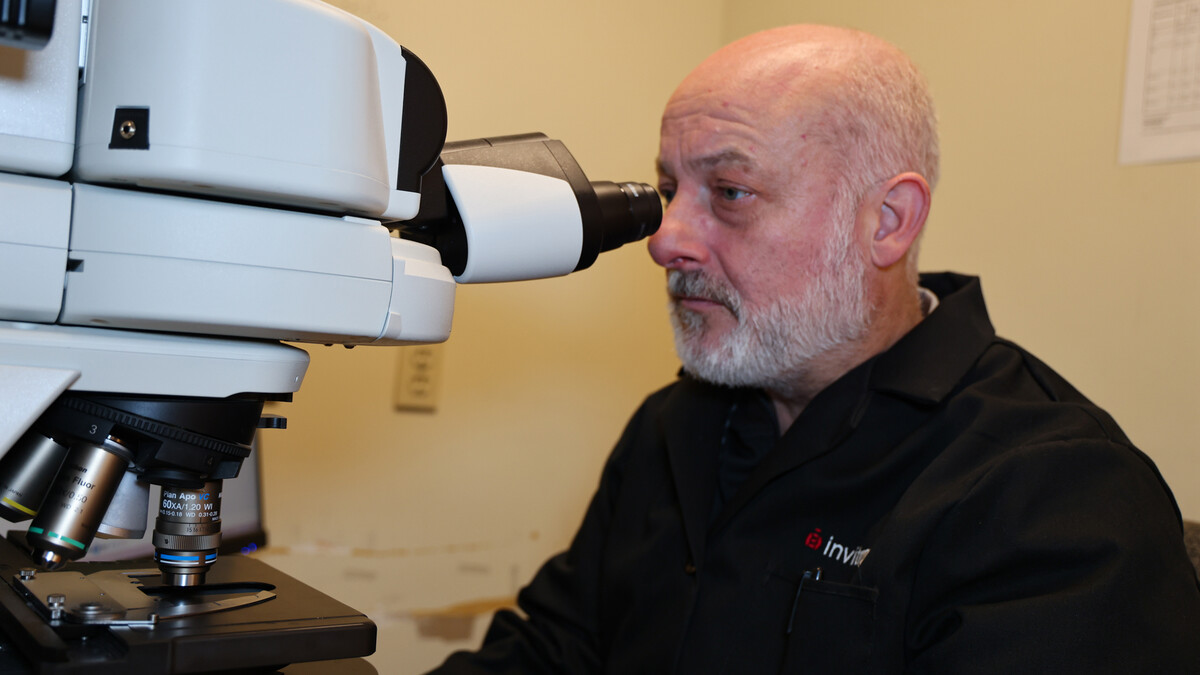
August 23, 2016
Lincoln, Neb. — Now, it’s the school’s turn get a grade.
With the Integrated Pest Management (IPM) Calculator and a walk-through inspection, schools get graded for the likelihood of insects, rodents and other unsavory, often-hidden pests.
IPM is a science-based, decision-making process to identify and reduce risks to human health and the environment from pests, and how to manage or control them. IPM combines pest-proofing, sanitation and human behavior changes. IPM in schools is a federal initiative to help reduce pesticide exposure to children.
The IPM Calculator was demonstrated at a summer IPM Coalition workshop and field trip to a Lincoln Public School. Coalition members hail from schools, public health entities, tribes, and state and federal government. Coalition coordinators are Nebraska Extension Educators Clyde Ogg, Pesticide Safety Education Office at the University of Nebraska-Lincoln; Jody Green, Lancaster County Extension; and Jonathan Larson, Douglas-Sarpy County Extension.
“Reducing and preventing key pests can have a huge impact on the lives and health of children in schools,” Ogg said.
Janet Hurley, school IPM specialist with Texas A&M AgriLife Extension Service, helped develop the IPM Calculator. Hurley demonstrated how the web-based program can help schools perform their own assessments and better prioritize pest problems in schools. It takes into account 18 key pests and 34 building features and maintenance practices.
“Your bugs aren’t quite as bad as we have in south Texas,” Hurley said. Too, Nebraska is in a zone relatively low for school pests, compared to southeastern states with warmer and moisture climates in a higher school pest zone.
As a person inspects a school campus for pests or potential pest problems, he or she fills out the IPM Calculator questionnaire. As answers are entered into the computer program, the calculator lists current and potential pest risks, and suggests solutions. An overall risk score grades the school from A to F.
Take, for example, the school kitchen. The calculator asks about cleanliness in and around sinks, garbage disposals, floor drains, and the lips of ventilation hoods. And about areas behind dishwasher panels, in warming ovens, on ceilings and walls. Here, warmth, food and moisture can be a safehaven for foodborne illness as well as insects and rodents.
In the classroom, crayons and paint are delectable to mice. Posters in hallways can harbor spiders, ants, even bedbugs.
The school dumpster? The more it oozes the lower the score. The lost and found? Could become a pile of pests. Shrubs against the school building? A roadway for roaches, rats and mice. Even the teacher’s lounge is vulnerable because everyone can bring something in from home or vehicle.
New buildings, too, can suffer from the critter fritters, though moreso as the building ages. Through shifts and settling, expansion joints can widen and windows loosen -- an open invitation for pests to come on in.
The IPM Calculator management tool is available for any of the nation’s 12,880 independent school districts to use. See it at http://ipmcalculator.com.
Besides testing “school health,” the July 27 IPM Coalition workshop included sessions on bedbugs and students, and an update on Emerald Ash Borer recently discovered in Nebraska. Information on those topics may be found at http://duval.ifas.ufl.edu/Bed_Bugs.shtml and http://nfs.unl.edu/nebraska-eab, respectively.
Oh, and the grade received by the LPS school? An A+.
Jody Green
Nebraska Extension
jgreen17@unl.edu
Jonathan Larson
Nebraska Extension
jonathan.larson@unl.edu
Clyde Ogg
Nebraska Extension
cogg1@unl.edu
Author: Cheryl Alberts







